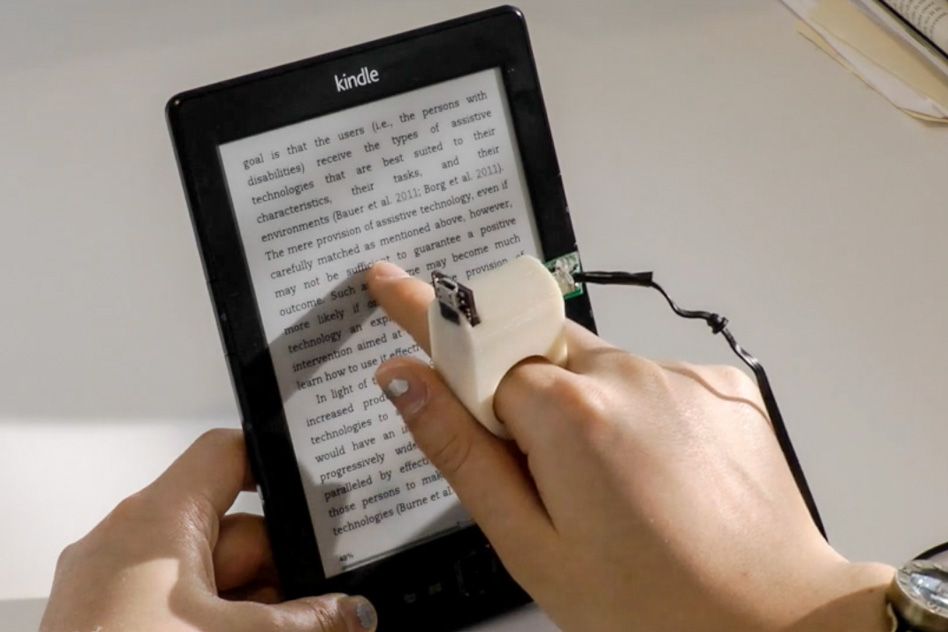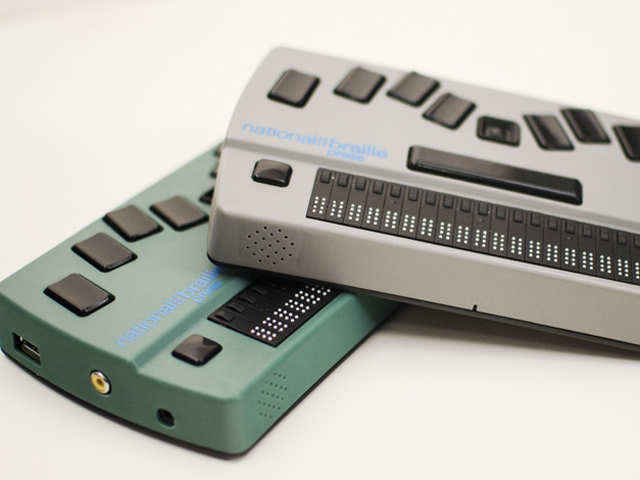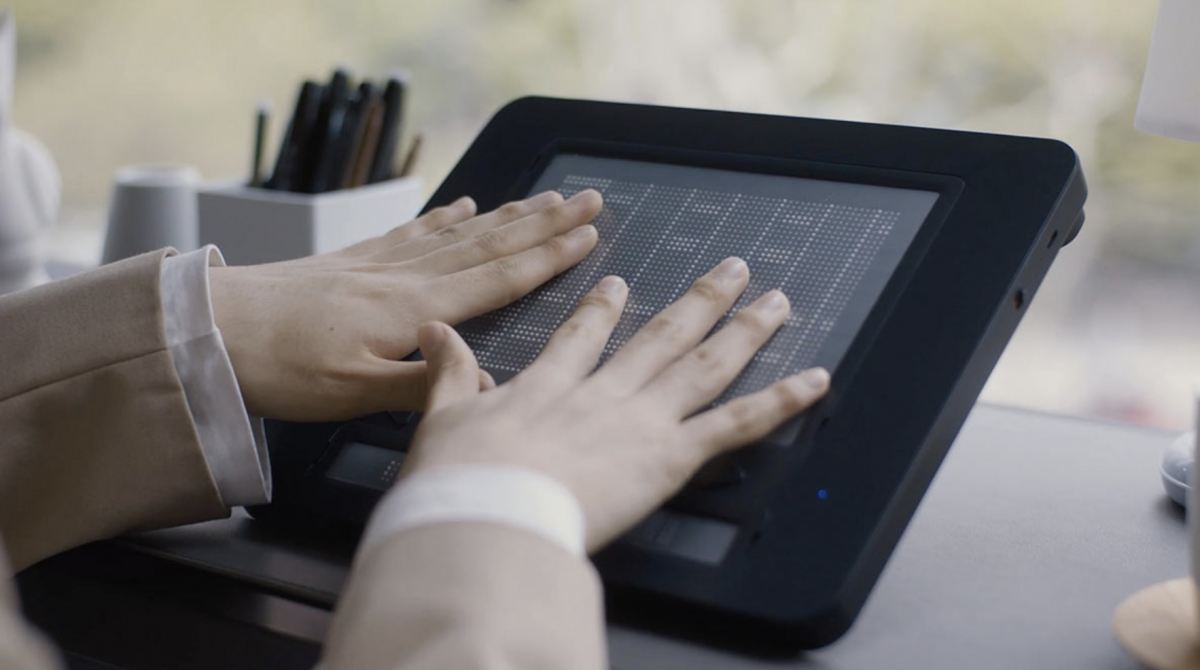Braille Displays and Notetakers: Essential Tools for Learning and Work
Braille Displays and Notetakers: Essential Tools for Learning and Work
Blog Article
Discover Cutting-edge Tools Designed for the Visually Damaged
The advancement of ingenious tools for the aesthetically impaired stands for a considerable innovation in access and freedom. Technologies such as clever glasses with AI capacities and mobile applications created to offer auditory descriptions are reshaping day-to-day experiences for individuals.
Smart Glasses for Navigating

Smart glasses developed for navigation are transforming the way visually impaired people connect with their environment. These innovative gadgets use a mix of video camera modern technology, expert system, and auditory comments to supply real-time details regarding environments. By using barrier detection systems, clever glasses can alert individuals to potential threats, allowing much safer movement in both acquainted and unfamiliar setups.
The integration of GPS innovation better improves navigating capabilities, enabling customers to get auditory directions as they move. This hands-free strategy not just cultivates freedom however also empowers visually impaired individuals to browse city landscapes with increased confidence. In addition, numerous smart glasses are furnished with features that identify sites and road indicators, providing contextual details that enhances the user experience.
Moreover, the growth of these devices is continuously progressing, with firms working to boost the precision of item recognition and increase the series of navigational functions. As wise glasses become much more budget-friendly and available, they hold the prospective to substantially change daily life for visually damaged users. Eventually, these ingenious devices represent a crucial action towards inclusivity, offering improved movement and a greater feeling of autonomy for individuals browsing the globe around them.

Mobile Application for Daily Living
How can mobile applications enhance the day-to-days live of visually impaired people? Mobile applications are reinventing the method visually impaired users browse their settings, take care of day-to-day jobs, and accessibility info. These applications offer necessary support through various capabilities, fostering self-reliance and improving lifestyle.
A number of cutting-edge mobile applications are designed particularly for day-to-day living. For circumstances, applications like Be My Eyes link aesthetically impaired customers with sighted volunteers via video clip calls, permitting them to obtain real-time help with jobs such as reading tags or navigating strange areas. Seeing AI, created by Microsoft, utilizes artificial knowledge to explain environments, reviewed message, and determine things, efficiently transforming a smart device right into a powerful device for everyday aid.
Additionally, navigating applications customized for the aesthetically damaged, such as Aira and BlindSquare, supply audio-based directions and environmental details, enabling individuals to traverse their surroundings safely and confidently. Beyond navigating and immediate assistance, mobile apps also support company and job monitoring, with attributes that help customers establish reminders, produce to-do lists, and track visits. In recap, mobile applications offer as indispensable resources, encouraging aesthetically impaired people to lead even more independent and fulfilling lives.
Wearable Technologies for Support
Empowerment via modern technology is increasingly apparent in the realm of wearable tools developed to assist visually impaired individuals. These ingenious devices incorporate perfectly right into day-to-day live, improving navigation and giving vital comments to users. Wise glasses equipped with video cameras can check out and acknowledge faces text aloud, permitting customers to connect more with confidence in social and expert setups.
An additional noteworthy advancement is making use of haptic responses systems in wearable tools. These systems utilize vibrations or other responsive signals to convey info regarding the user's setting, such as obstacles or adjustments in surface, boosting wheelchair and safety. Wearable technologies also include wristbands that link to smartphones, notifying customers to alerts through refined vibrations, hence enhancing connectivity without reliance on visual signs.
As these men's eyeglasses innovations proceed to evolve, they are not just enhancing independence for visually impaired people however also promoting a higher feeling of inclusion in society. By connecting the gap in between difficulties encountered in day-to-day living and the capacity for freedom, wearable modern technologies function as pivotal devices in the quest for equality and empowerment for those with visual problems.
Audio Description Devices
Sound summary devices play an essential duty in enhancing access for visually damaged people, providing them with the ability to involve with aesthetic media. Smart glasses for the visually impaired. These devices offer narrated descriptions of key aesthetic components in movies, tv shows, and live performances, guaranteeing that individuals can fully comprehend the context and emotions communicated with visuals
Sound summary can be integrated into various platforms, including streaming solutions, cinema testings, and live movie theater. Numerous prominent streaming services currently include audio description as an accessibility function, allowing customers to select it quickly. In enhancement to mainstream media, specialized applications also exist, providing audio summaries for art exhibits, galleries, and various other cultural events.
The performance of audio summary hinges on the skill of the storytellers, who should share aesthetic details succinctly without interfering with the initial sound. Advancements in this area are additionally paving the means for even more tailored experiences, where customers can readjust the degree of detail and pacing according to their choices.
Braille Innovations and Devices
Braille gadgets and developments have considerably changed the method aesthetically damaged people communicate with message and information. Modern advancements have actually led Full Article to the development of functional tools that boost proficiency and self-reliance amongst customers.
Moreover, mobile Braille notetakers incorporate conventional Braille input with modern-day performances, assisting in note-taking, scheduling, and record modifying on the move. Voice-activated assistive devices. These compact devices typically feature text-to-speech capacities, linking the gap in between Braille and acoustic info
In addition, cutting-edge Braille printers have arised, permitting users to create Braille tags, files, and instructional materials efficiently. This accessibility promotes greater engagement in expert and academic environments, inevitably advertising inclusivity.
In addition, study right into clever Braille her explanation modern technologies proceeds to expand. Tools that integrate expert system are being checked out to give real-time navigating aid and contextual information, enhancing the customer experience in diverse settings. In general, these innovations mirror a commitment to empowering aesthetically damaged individuals with modern technology, guaranteeing they can easily gain access to and engage with the globe around them.

Verdict
The innovation of innovative devices for the visually impaired substantially boosts independence and high quality of life. These technologies not only foster better inclusion however likewise advertise autonomy in everyday tasks, inevitably contributing to a much more easily accessible and fair society for aesthetically impaired people.
As smart glasses become more easily accessible and inexpensive, they hold the prospective to considerably transform daily life for aesthetically impaired users. Mobile apps are revolutionizing the method aesthetically impaired customers browse their atmospheres, manage daily jobs, and gain access to details. Apps like Be My Eyes attach aesthetically impaired customers with sighted volunteers using video calls, allowing them to obtain real-time assistance with jobs such as checking out tags or navigating strange rooms.Additionally, navigating apps customized for the visually impaired, such as Aira and BlindSquare, use audio-based instructions and ecological info, making it possible for users to traverse their environments securely and with confidence.The development of innovative devices for the visually damaged substantially enhances independence and quality of life.
Report this page